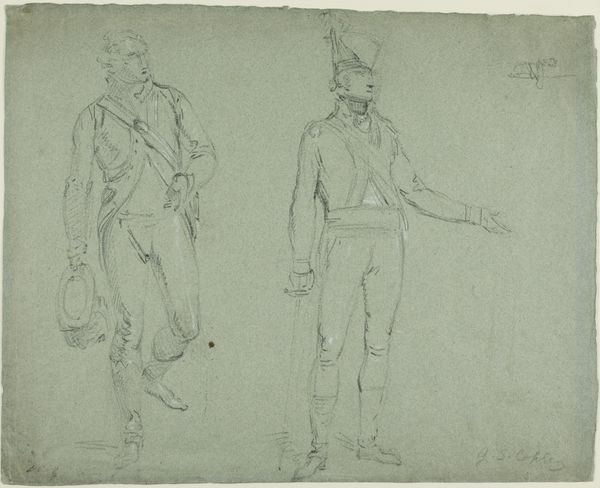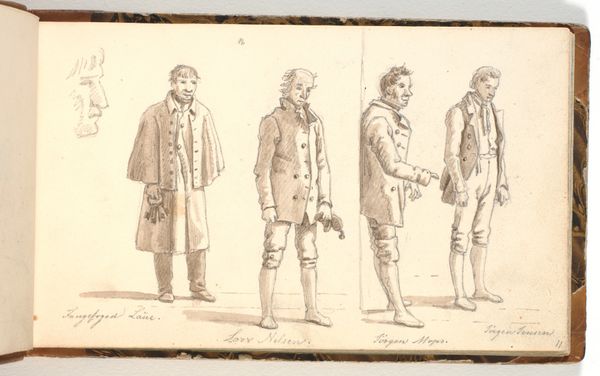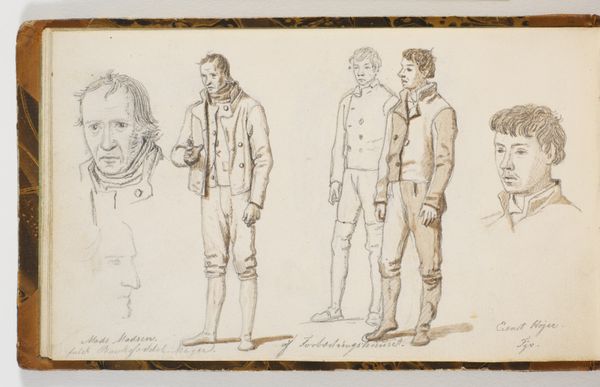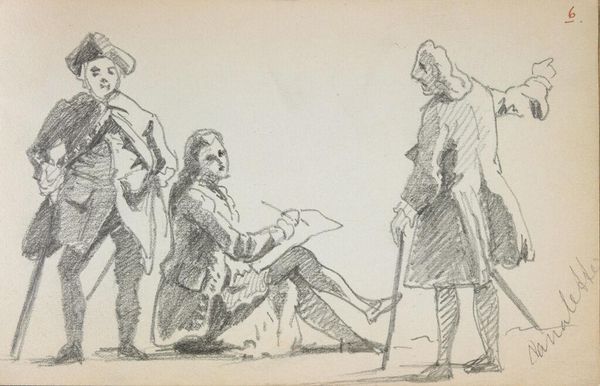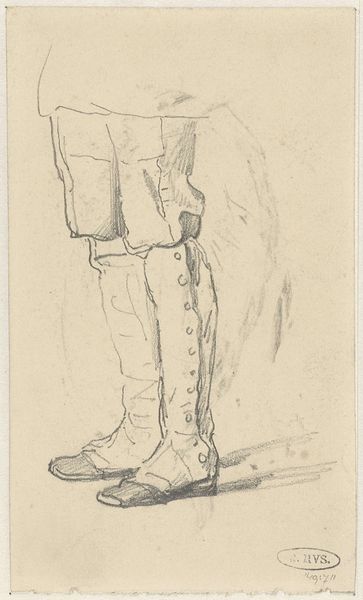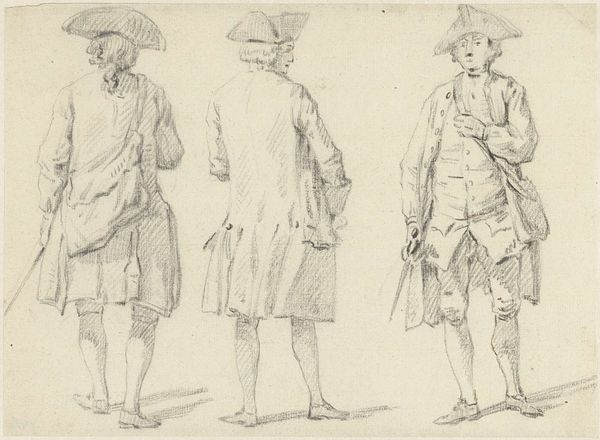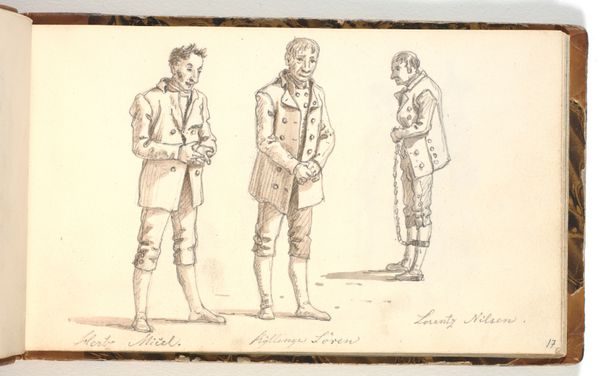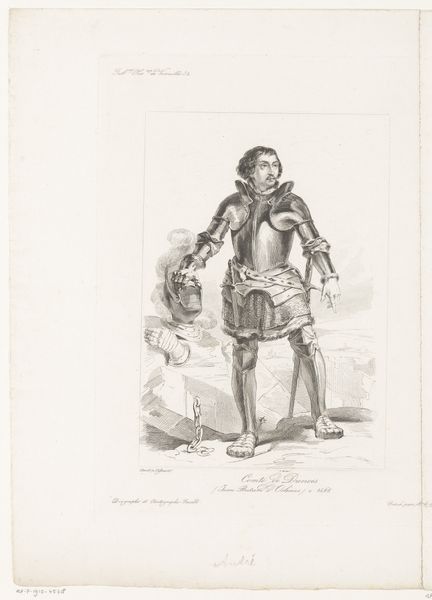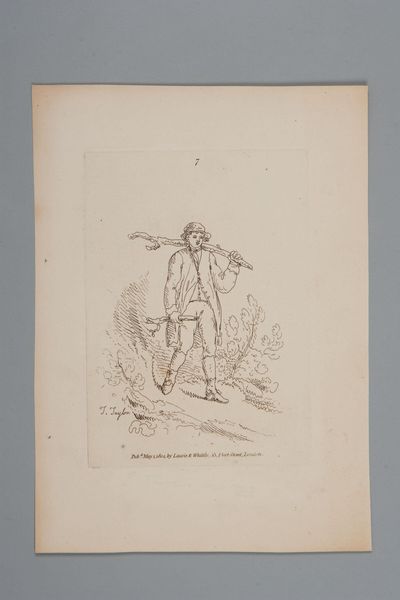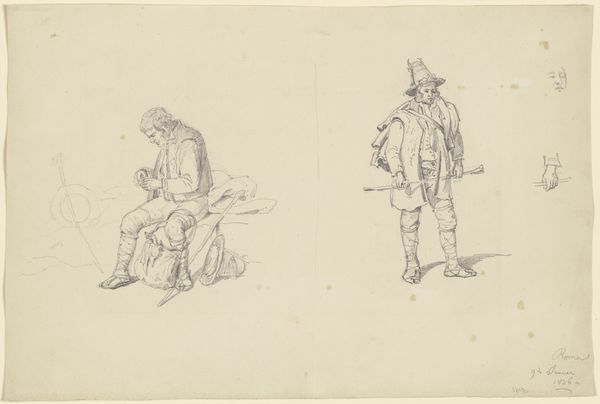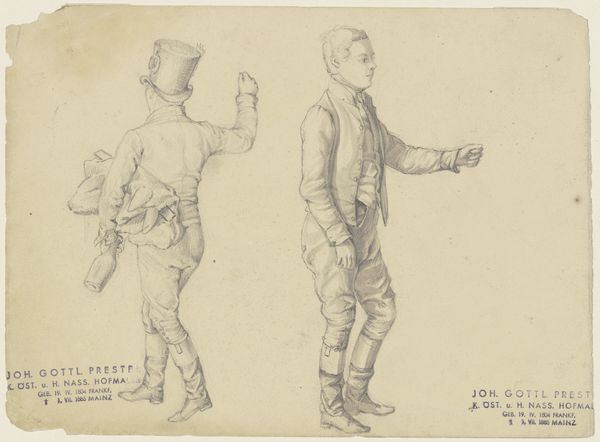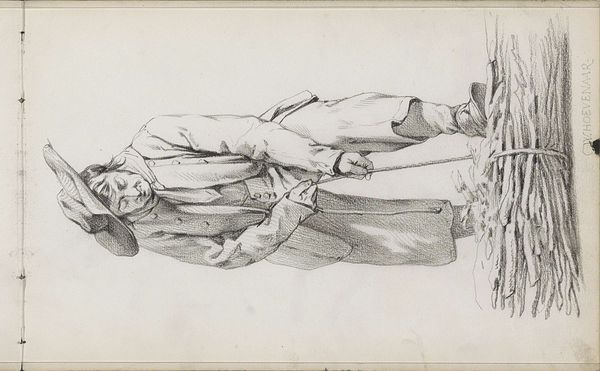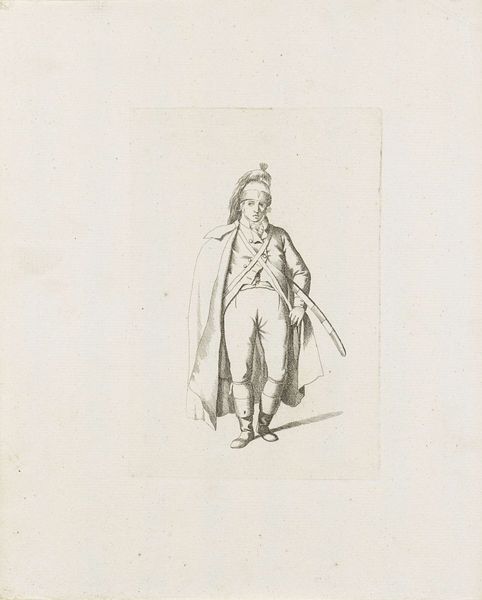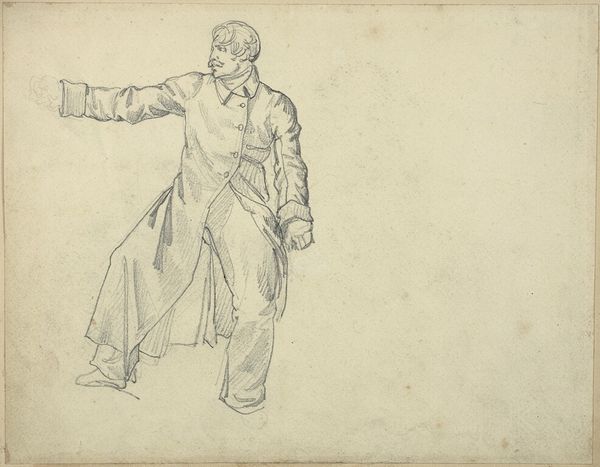
drawing, pencil
#
portrait
#
drawing
#
figuration
#
pencil
#
history-painting
#
academic-art
#
realism
Copyright: Public Domain: Artvee
Editor: So, this drawing is titled "Studies after Anthony van Dyck’s Portrait of Arthur Goodwin," created around 1825 by James Ward, using pencil. It looks like studies of the figure and items of clothing rather than a finished piece. The gentleman seems like a cavalier and the other items of dress scattered beside him suggest the scene is more fragmented than an entire portrait. How do you interpret Ward's choices in representing this earlier artwork? Curator: Well, seen through the lens of art history, these studies by Ward highlight the role of artistic lineage and institutional power. Ward, active in the Royal Academy, consciously positions himself within a tradition by engaging with a celebrated figure like van Dyck. These copies serve a crucial function: to codify artistic principles within the academy. Do you think these sketches reinforce or challenge the perceived authority of Van Dyck's original? Editor: That’s a good question. I initially thought that these fragments undermined van Dyck’s authoritative original because we are invited to only look at certain aspects, but actually they might further enshrine him through such close observation? The details here are really striking! Curator: Exactly. Consider too, how the "copy" historically functioned within artistic training. It wasn’t merely mimicry. Copying and learning by imitating the old Masters served as a way to create new meanings of history while maintaining a certain classical position and authority of imagery within the contemporary canon. Are there any visual elements that stand out to you in the relationship between Ward’s style and Van Dyck’s, thinking about how political views were transmitted during both periods? Editor: Now that I think of it, it looks as though Van Dyck, a royalist court painter for Charles 1st, sought to portray Arthur Goodwin as his most distinguished, perhaps as an attempt to convey power. The composition makes Arthur look upright and dignified. By contrast, this looks fragmented and lacks dynamism; although James Ward may not have included symbolism to make this copy look political in this study, by observing Van Dyck he certainly transmits meaning onto it! Curator: Precisely! These studies invite us to consider not only individual artistry but also how museums, academies, and sociopolitical forces mold artistic production. Each reinterpretation becomes another layer in understanding its cultural importance! Editor: Absolutely! I’ll definitely be thinking about this piece in terms of art politics going forward!
Comments
No comments
Be the first to comment and join the conversation on the ultimate creative platform.
